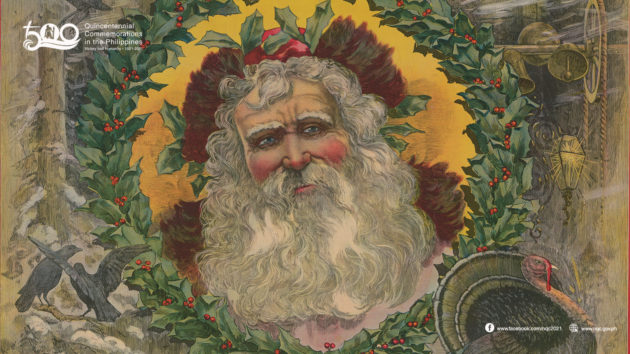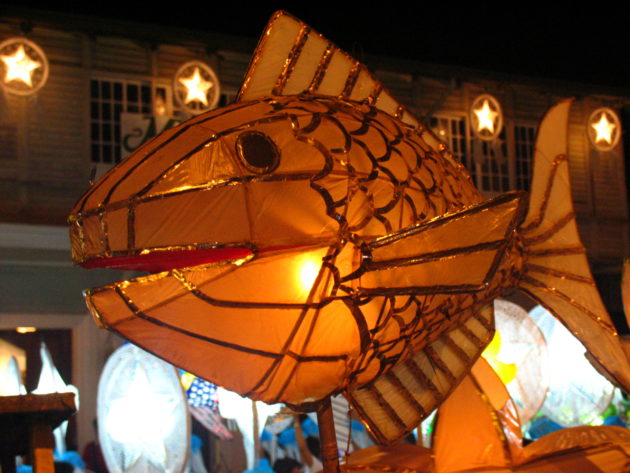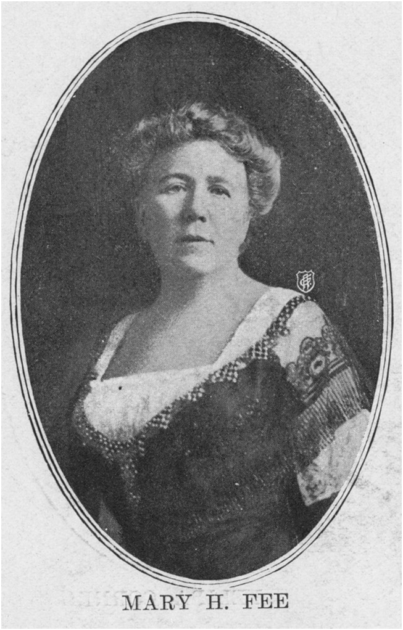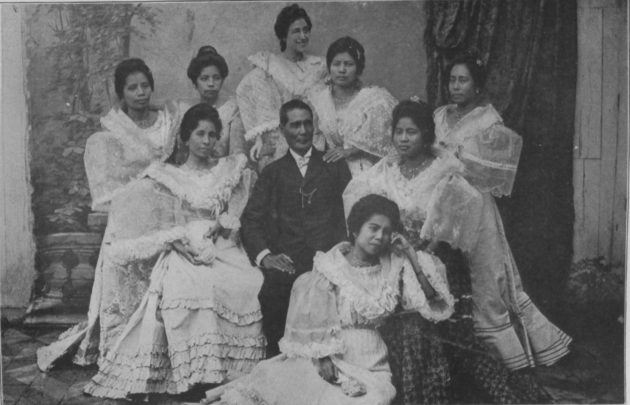Filipino Christmas Before Santa Claus and Christmas Tree
Posted on 22 December 2020
By Fr. Dedert Duarte

What was Christmas in the Philippines before the introduction of Santa Claus and the Christmas tree by the Americans? Mary Helen Fee, an American Thomasite assigned in the town of Capiz (now Roxas City) offers us a glimpse of how the Catholic faithful of Capiz town observed Christmas. It is in Chapter 15 of her book A Woman’s Impressions of the Philippines, published in 1910 (first edition) and 1912 (second edition).
Gift-Giving on January 6
She immediately noticed the absence of Santa Claus and the Christmas tree in Capiz: “[The] Filipinos do not understand Santa Claus or the Christmas Tree.” She also noticed that “giving of presents” (regalo in local vernacular) was “by no means a universal custom of theirs,” and was not observed on December 25 but rather “given on the festival of Tres Reyes, or The Three Kings, some six or eight days after Christmas.” It is because the Spaniards introduced the tradition of gift-giving every Epiphany or the feast of the Three Wise Men or popularly known as “Three Kings” on January 6 (now, being celebrated on the first Sunday of January). The American influence was so strong that the Filipinos’ concept of regalo has been moved to December 25. Nevertheless, there are still towns in the Philippines which observe gift giving on Three Kings, like in Marilao and Meycauayan City, Bulacan, for an instance, which is called paskong bukid (‘farm Christmas’).
It is also interesting to note that even though the commercial Santa Claus most of the Filipino kids and kids at heart know was indeed introduced by the Americans, our ancestors already knew San Nicolas de Myra or Bari, the famous 4th-century Catholic bishop who used to give gifts to children and from whom the idea of Santa Claus was derived. In fact, there are parishes and barrios named after him in the Philippines, like Barangay San Nicolas, Tapaz, Capiz. The local lore says that a group of children discovered, while playing, a statue of the long-lost image of “San Nicolas” buried under the rice husks. It was actually San Nicolas de Myra, and since then venerated him after the faithful thought their barangay was named after San Nicolas de Tolentino, also an equally important Catholic saint.
The First Christmas Tree
Mrs. Fee also mentioned that a certain Mrs. C. built the first recorded Christmas tree in Capiz. “No Christmas pine could be found,” said Mrs. Fee. So, Mrs. C improvised a Christmas tree using a lemon tree (kalamansi) and decorated it “with the candles” she bought from the Chinese shops (including “little devices for fastening them to the tree”). “[Strings] of popcorn and colored paper flowers, …converted into quite the natural article” further adorned the improvised Christmas tree. The tree was built as part of “a Christmas festival” Mrs. C arranged for the children.
Nevertheless, Mrs. Fee recorded that a typical Filipino household did not lack a custom of adorning a home with Christmas decors: “the Filipinos honored the day by decorating their house-fronts with flags and bunting, and at night by illuminating them with candles in glass shades stuck along the windowsills.”
Christmas Toys and Lanterns
Despite lacking a Christmas tree and a Santa Claus to complete the “Christmas” she used to in the Western world, Mrs. Fee recounted the joy of Filipino children to the Philippine Christmas they were accustomed to.
Nearly every child was displaying a toy that seems to be the special evidence of Christmas in the Philippines — some sort of animal made of tissue paper and mounted on wheels. It is lighted within like a paper lantern and can be dragged about. Great is the pride in these transparencies, and great the ambition displayed in the construction. Pigs, dogs, cats, birds, elephants, and tigers, of most weird and imposing proportions they are, and no few feuds and jealousies grew out of their possession…. They took their presents and turned the toys over gravely and sucked gingerly at the sweets. Then one by one they marched out to join their relatives and the transparencies.

What a pity that this Christmas toy tradition did not survive which could have inspired family activity and foster creativity in children during Christmas. We could have rightfully sung, “Whenever I see girls and boys “playing” lanterns on the street!” Nonetheless, this description of Mrs. Fee fits well the lubenas (a corruption of novenas or the nine-day vigil to Christmas Day) of the Kapampangans. These are lanterns with animal figures made of papel de Japon being paraded during simbang bengi (nine-day Christmas masses). Below is a clip of the lubenas in Angeles City courtesy of Angeles City Tourism Office.
Misa de Gallo and Misa Pastoril
Mrs. Fee also attended the Midnight Mass (Misa de Gallo) and beheld its solemnity and pageantry: the music and instruments (most likely the Misa Pastoril), the enormous candles which illumined the church, the colorful paper flowers, and the dramatic arrival of the Star of Bethlehem to the Belen. She observed, “the church in the provinces is at once the place of worship, the theatre, the dispenser of music and art, the place where rich and poor meet, if not on the plane of equality, in relations that bridge the gulf of material prosperity with the dignity of their common faith.”
Christmas Ball, Songs
After the mass, Mrs. Fee wrote about some sort of a Christmas ball:
Well, as usual, the adults, after attending church, would plunge themselves into party till dawn! Perhaps like her, the town’s folk did not have a good night’s sleep for the dances continued until 2 a.m. while the band kept roaming around the street at dawn!
The Americans in the Philippines most likely longed for their turkey and the snow in Filipino chicken served during noche buena (Christmas eve) and the cirrus clouds; and the American carols in “old Latin chant with such throaty voices that it sounded as if the tones were being dragged out by the roots,” said Mrs. Fee.

Postscript
The reminiscences of Mrs. Fee are invaluable in studying how dynamic Filipino culture is and how foreign influences and socio-political climate (i.e., the Philippines was then still adjusting to American colonial life after our war against the U.S.) shaped our idiosyncrasies, preferences, and likes; like our excitement to Santa Claus and the joy of setting up Christmas trees, in different materials and sizes, even as early as September became “Filipino.”
How this current pandemic situation modifies our future Christmases is still to be seen!
You may continue reading the lengthy account of Fee on Philippine Christmas in her book A Woman’s Impressions of the Philippines (Chicago: A. C. McClurg and Co., 1912) free online via Project Gutenberg (text-rich), the University of Michigan Digital Library (digitized pages) or the Cornell University Library (also digitized).

About the Author
Fr. Dedert Duarte is a church historian from Roxas City, Capiz. He is currently finishing his doctorate degree in the Faculty of Theology at the Westfälische Wilhelms-Universität Münster in Germany.

